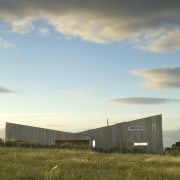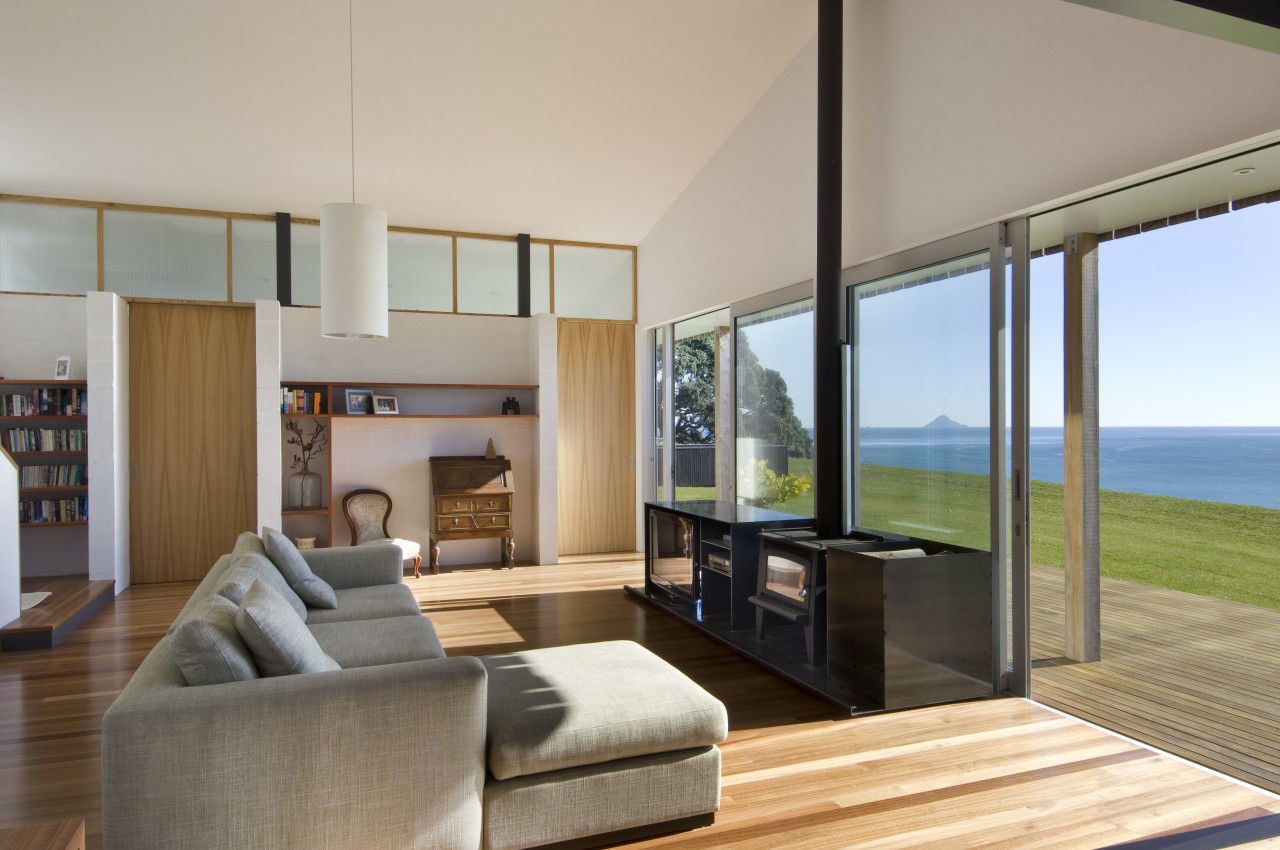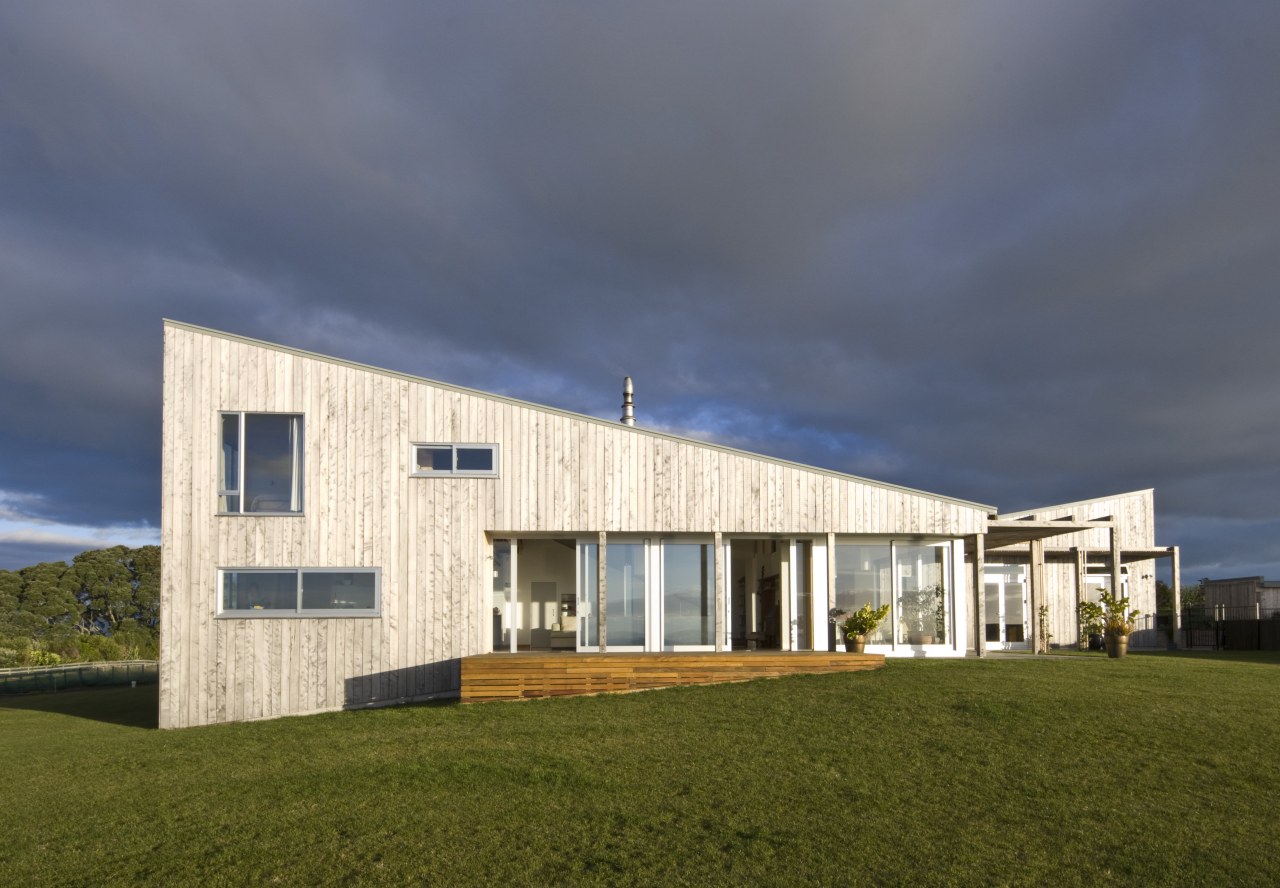Raised on a farm
With its stark geometric forms, monopitched roofline and macrocarpa cladding, this coastal house is strongly reminiscent of traditional rural buildings
It began with a bare paddock on a hillside, a great view and a list of must-haves from the client. But the owners of this new coastal house admit they were happy to leave the overall design concept to the architect.
The result is an unexpected, yet totally natural response to the dramatic rural setting. Designed by Hugh Tennent and Sharon Jansen of Tennent & Brown Architects, the house rises from the ground in two distinct, geometric forms, which are a direct reflection of the functionality within one pavilion accommodates the main living area and master suite, while the other houses garaging and guest rooms.
"We envisioned two strong, simple forms that would sit on top of the hill and be left to weather naturally," Tennent says. "Because there are no trees in the centre of the site, the architecture is quite strident in terms of the shape. The building catches the light and sits up in the rural landscape."
Tennent says the design was influenced by rural buildings in the area, and by the work of McKay-Lyons, a Nova Scotia architect. The monopitched roofs and macrocarpa cladding, which extends down over the foundations, reinforce these references.
The macrocarpa planks were milled on a family farm, and are wider than standard. Placed on top of battens, they provide a very flat, smooth exterior that is reminiscent of packing cases. Sliders in the living areas are set well back behind verandas to retain the monolithic quality of the walls, and to provide summer shade.
advertisement
"The cladding enhances the geometric quality, while also providing textural interest," says Tennent. "The use of a single, simple material and the limited number of windows mean the architecture is easily understood. At the same time, the composition of both vertical and horizontal windows makes it more contemporary."
Jansen says the design was also determined by the fall of the land and the view.
The owners wanted to be able to see the beach as well as the ocean. Two vertical windows on the high east wall provide views from the dining room on the ground floor and the master bedroom above. From the outside, they appear as a single window its size in keeping with the massive scale of this elevation.
"Rather than provide great expanses of glazing, we chose to frame key aspects, so you have a different experience of the view in each room," Jansen says. "It also means the house is less like a fishbowl, and more comfortable at night, as there are fewer reflections."
Sustainability was another strong design influence. All the windows are double glazed, there is solar water heating, and a separate sun room features passive solar heating. The room's polished concrete floor and an extra-thick blockwork wall, plastered in a crystalline finish, provide a solid thermal mass that absorbs the heat of the sun by day and releases it at night.
The open-plan living area features exposed timber joists and boards, and steel structural posts.
"The steel creates a lighter feel than would have been possible with an all-timber interior," says Jansen. "It also gives it a refined, yet slightly industrial look."
An entertainment centre and fireplace are integrated within a low steel cabinet, which was designed to ensure the view would not be compromised. Other built-in furniture includes plenty of open shelving and a 5m-long desktop in the mezzanine study.
Credit list
Builder
Cladding
Kitchen cabinets
Splashback
Taps
Refrigeration
Story by: Colleen Hawkes
Photography by: Paul McCredie
Home kitchen bathroom commercial design
Reflected beauty
Bach sensibility with eHaus standards
Stand up and be noticed
advertisement
advertisement
advertisement
advertisement
advertisement
advertisement
advertisement
















